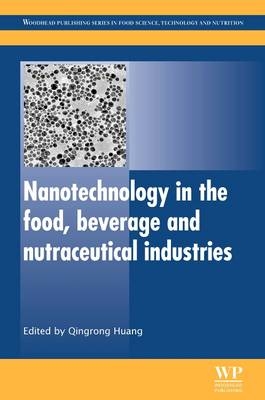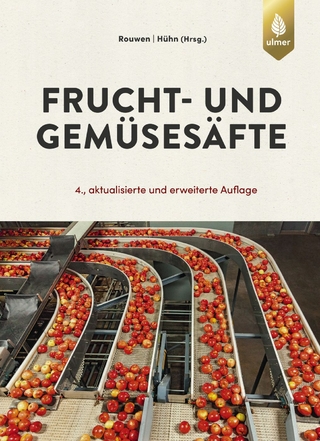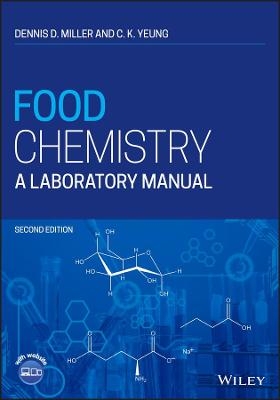
Nanotechnology in the Food, Beverage and Nutraceutical Industries
Woodhead Publishing Ltd (Verlag)
978-0-08-101632-9 (ISBN)
Qingrong Huang is Associate Professor in the Department of Food Science at Rutgers University at New Brunswick, USA. He is internationally known for his research into the applications of nanotechnology in the food industry.
Contributor contact details
Woodhead Publishing Series in Food Science, Technology and Nutrition
Part I: Processes, material characterization, risks and regulation
Chapter 1: An overview of the development and applications of nanoscale materials in the food industry
Abstract:
1.1 Introduction
1.2 Processes for nanomaterial production
1.3 Nano-assembled entities
1.4 Nanoscale materials – their applications in the food industry
1.5 Emerging trends
Chapter 2: Potential health risks of nanoparticles in foods, beverages and nutraceuticals
Abstract:
2.1 Introduction
2.2 Nanoscale materials
2.3 Potential health risks of nanoparticles in foods, beverages and nutraceuticals
2.4 Risk assessment of nanomaterials present in foods, beverages and nutraceuticals
2.5 Future trends
2.6 Sources of further information and advice
Chapter 3: Detecting and characterizing nanoparticles in food, beverages and nutraceuticals
Abstract:
3.1 Introduction
3.2 Detecting and characterizing – but what?
3.3 Challenges in detecting and characterizing nanoparticles in food products
3.4 Methods for detection and characterization of nanoparticles in food products
3.5 Detection and characterization of engineered nanoparticles in foods, beverages and nutraceuticals
3.6 Future trends
3.8 Appendix: glossary
Chapter 4: Regulatory frameworks for food nanotechnologies
Abstract:
4.1 Introduction
4.2 Main applications in the food, beverage and healthfood industries
4.3 Regulatory developments in nanotechnologies
4.4 Risk assessment
4.5 Conclusions
Chapter 5: Atomic force microscopy (AFM) and related tools for the imaging of foods and beverages on the nanoscale
Abstract:
5.1 Introduction
5.2 Methods
5.3 Applications
5.4 Future trends
Chapter 6: Characterization of food materials in multiple length scales using smallâ€angle Xâ€ray scattering and nuclear magnetic resonance: principle and applications
Abstract:
6.1 Introduction
6.2 Small-angle X-ray scattering (SAXS): an introduction
6.3 Direct and indirect interpretation of SAXS data
6.4 Application of synchrotron SAXS to food materials
6.5 Nuclear magnetic resonance (NMR)
6.6 Diffusion NMR
6.7 NMR spin relaxation
6.8 Time domain (TD)-NMR technique
6.9 Conclusions and future trends
Part II: Applications of nanotechnology in the food, beverage and nutraceutical industries
Chapter 7: Improving food sensory and nutritional quality through nanostructure engineering
Abstract:
7.1 Introduction
7.2 Engineering nanostructures in foods and beverages for improved sensory quality
7.3 Engineering nanostructures in foods and beverages for improved nutritional quality
7.4 Future trends
7.5 Sources of further information and advice
Chapter 8: Nanocapsules as delivery systems in the food, beverage and nutraceutical industries
Abstract:
8.1 Introduction
8.2 Chapter organization
8.3 Factors to consider when preparing nanoparticles and nanocapsules
8.4 Nanocapsule formation
8.5 Top-down approaches for nanocapsule formation: media milling
8.6 Top-down approaches for nanocapsule formation: homogenization
8.7 Conclusions
Chapter 9: Association colloids as delivery systems: principles and applications in the food and nutraceutical industries
Abstract:
9.1 Introduction
9.2 Naturally occurring association colloids
9.3 Protein-based systems
9.4 Examples of association colloids in food applications
9.5 Future trends
9.6 Sources of further information and advice
Chapter 10: Fabrication, characterization and properties of food nanoemulsions
Abstract:
10.1 Introduction
10.2 Emulsion science and technology
10.3 Nanoemulsion formation
10.4 Applications of nanoemulsions
10.5 Conclusions
10.6 Future trends
10.7 Acknowledgments
10.8 Sources of further information and advice
Chapter 11: Nanotechnology-based approaches for rapid detection of chemical and biological contaminants in foods
Abstract:
11.1 Introduction
11.2 Nanotechnology or nanomaterial-enabled novel detection techniques
11.3 Future trends
11.4 Sources of further information and advice
Chapter 12: Nanocomposites for food and beverage packaging materials
Abstract:
12.1 Introduction
12.2 Biodegradable polymers
12.3 Barrier properties in packaging
12.4 Nanofillers for nanocomposite packaging materials
12.5 Examples of nanocomposites and their properties
12.6 Nanobiocomposites: concepts and barrier properties
12.7 Future trends
Chapter 13: Electrospun fibers: fabrication, functionalities and potential food industry applications
Abstract:
13.1 Introduction
13.2 Production of nanofibers by electrospinning
13.3 Potential applications in the food and beverage industries
13.4 Future trends
13.5 Conclusions and sources of further information and advice
Chapter 14: 14 Milk nanotubes: technology and potential applications
Abstract:
14.1 Introduction
14.2 Preparation of a-lactalbumin nanotubes
14.3 Kinetics of self-assembly
14.4 Structure of the nanotubes
14.5 Stability of α-lactalbumin nanotubes
14.6 Future applications of α-lactalbumin nanotubes
Chapter 15: Nano- and micro-engineered membranes: principles and applications in the food and beverage industries
Abstract:
15.1 Membrane filtration technology
15.2 Membrane structures
15.3 Nano- and micro-engineering
15.4 Filtration applications
15.5 Membrane emulsification
Index
| Erscheinungsdatum | 27.07.2016 |
|---|---|
| Reihe/Serie | Woodhead Publishing Series in Food Science, Technology and Nutrition |
| Verlagsort | Cambridge |
| Sprache | englisch |
| Maße | 156 x 234 mm |
| Gewicht | 660 g |
| Themenwelt | Technik ► Lebensmitteltechnologie |
| ISBN-10 | 0-08-101632-8 / 0081016328 |
| ISBN-13 | 978-0-08-101632-9 / 9780081016329 |
| Zustand | Neuware |
| Haben Sie eine Frage zum Produkt? |
aus dem Bereich


